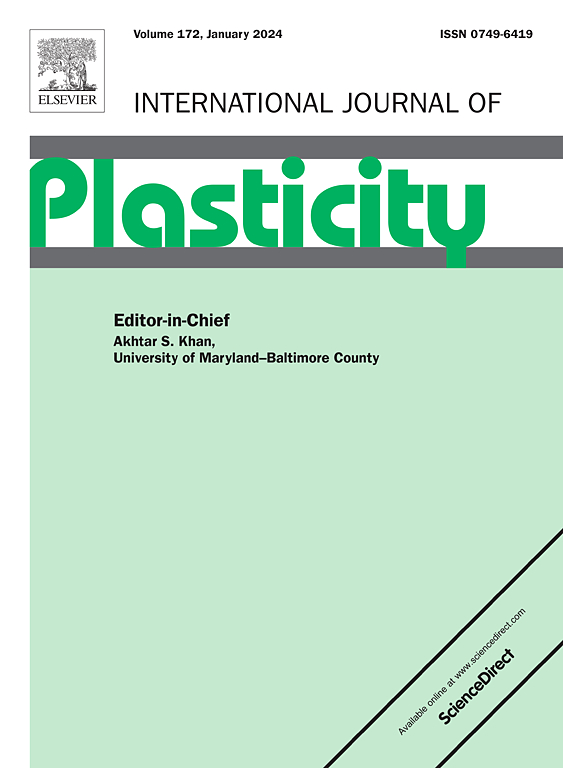不同层错能CoCrNi合金的强化特性
IF 12.8
1区 材料科学
Q1 ENGINEERING, MECHANICAL
引用次数: 0
摘要
量化各种强化机制的作用是操纵这些机制和设计新型合金的必要条件。尽管CoCrNi合金表现出优异的力学性能,但其强化特性仍有待进一步研究。本文对不同层错能的CoCrNi合金进行了原位中子衍射拉伸试验,并对其变形组织进行了表征。系统地研究了位错强化特征和平面断层的作用。SFE的减小限制了交叉滑移,从而增加了位错倍增率,降低了位错强化系数α。此外,较低的SFE有利于位错和平面断层同时激活,位错强化始终起主导作用。本文量化了CoCrNi合金的合理α值,并确定了交叉滑移是影响面心立方(FCC)合金α值的关键因素。本文章由计算机程序翻译,如有差异,请以英文原文为准。


Strengthening characteristics of CoCrNi alloys with different stacking fault energies
Quantifying the contributions of various strengthening mechanisms is essential for manipulating these mechanisms and designing novel alloys. Although CoCrNi alloys demonstrate exceptional mechanical properties, their strengthening characteristics remain to be investigated. In this work, we conducted in situ neutron diffraction tensile tests and characterized deformation microstructures for CoCrNi alloys with different stacking fault energies (SFEs). The dislocation strengthening characteristics and the role of planar faults were systematically investigated. A reduction in SFE restricts cross slip, thereby increasing the dislocation multiplication rate while decreasing the dislocation strengthening coefficient α. Additionally, a lower SFE facilitates the simultaneous activation of dislocations and planar faults, with dislocation strengthening consistently playing a dominant role. This work quantifies reasonable α values for CoCrNi alloys and identifies cross slip as a critical factor potentially influencing α value in face-centered cubic (FCC) alloys.
求助全文
通过发布文献求助,成功后即可免费获取论文全文。
去求助
来源期刊

International Journal of Plasticity
工程技术-材料科学:综合
CiteScore
15.30
自引率
26.50%
发文量
256
审稿时长
46 days
期刊介绍:
International Journal of Plasticity aims to present original research encompassing all facets of plastic deformation, damage, and fracture behavior in both isotropic and anisotropic solids. This includes exploring the thermodynamics of plasticity and fracture, continuum theory, and macroscopic as well as microscopic phenomena.
Topics of interest span the plastic behavior of single crystals and polycrystalline metals, ceramics, rocks, soils, composites, nanocrystalline and microelectronics materials, shape memory alloys, ferroelectric ceramics, thin films, and polymers. Additionally, the journal covers plasticity aspects of failure and fracture mechanics. Contributions involving significant experimental, numerical, or theoretical advancements that enhance the understanding of the plastic behavior of solids are particularly valued. Papers addressing the modeling of finite nonlinear elastic deformation, bearing similarities to the modeling of plastic deformation, are also welcomed.
 求助内容:
求助内容: 应助结果提醒方式:
应助结果提醒方式:


